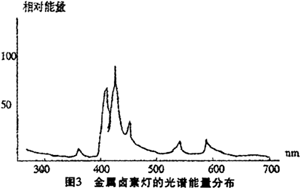In the new century, we must pay more attention to light sources. The 500-watt incandescent lamp, light halogen lamp and fluorescent lamp bundle suspended on the ceiling are not economical. These light sources have a relatively long exposure time, and the resulting film plate is limited in print force and poor in definition. Although the sun is a source of ultraviolet light and is used as an effective light source for exposure stencils in some parts of the world, we cannot all live in Hawaii and Singapore!

Good light sources include the output intensity of UV light, good geometry and a way to measure the amount of light reaching the screen. The spectra emitted by different light sources vary greatly and are critical to a defined exposure time. Different types of photosensitive adhesives have different absorption peaks for ultraviolet light, and generally require wavelengths of light between 360 and 420 nm. UV-rich light sources include high-pressure mercury lamp light sources, metal halide light sources, carbon arc light sources, xenon light sources, and some fluorescent light sources. Although the carbon arc lamp is rich in ultraviolet light, its intensity often changes and emits harmful gas. Helium light sources consume high power and therefore cannot compete with high-efficiency vapor lamps and metal halide lamps. Although the fluorescent lamp "increases brightness," it does not reach the peak of the wavelength of the ultraviolet light required for exposure of the photosensitive adhesive. If a fluorescent lamp is used, it requires the purchase of a lamp specifically for stencil exposure. Fig. 3< is the energy spectrum of the light emission spectrum of the metal halide lamp. It can be seen from the figure that the relative energy peak value is between 400 and 500 nm, which is a kind of light source with much ultraviolet radiation and can increase the printing efficiency. It is one of the preferred light sources for drying plates.
The intensity of the UV output of the exposure equipment significantly affects the exposure time, but the geometry of the light source is also a factor that must be considered when purchasing this type of equipment. In terms of edge definition and resolution, single-point light sources with concentrated beams are best; multi-point light sources, such as multi-row fluorescent tubes, do not concentrate light and scatter over the entire surface of the template, which impairs the quality of the template. Therefore, the exposure time is short, so that the subtle layers can be distinguished, but this also reduces the resistance of the film plate.
If used improperly, even a good quality light source will produce the worst results. Because the human eye cannot observe the change of UV light and intensity, it is recommended to use an optical integrator with the light source. The optical integrator uses a photocell to read the amount of UV light that hits the template. It compensates for the decrease in UV output due to electrical fluctuations and lamp aging, and adjusts the exposure time appropriately. The use of an optical integrator ensures that the same amount of exposure light is always received regardless of how long the screen exposure time is. When using an optical integrator, you must monitor the exposure time and replace the lamp regularly. Before the lamp can not be used, its UV output tends to drop to a dangerously low level.
4.1 Correct Determination of Exposure Time
Photometrically, light intensity is usually expressed in terms of "Le." According to the photometric law, illumination decreases with increasing distance. When the distance increases from one meter to two meters, the illumination decreases to 1/4. It can be expressed by the following formula:

According to the above calculation formula, it can be proved that the exposure time is inversely proportional to the light intensity. That is, the stronger the light intensity of the light source, the shorter the exposure time. The longer the exposure distance, the longer the exposure time.